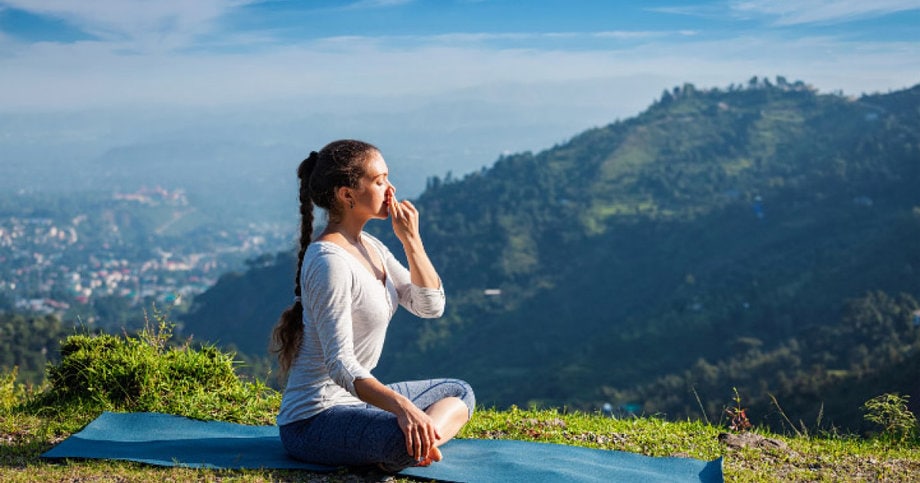The Art of Breathing Meditation: Techniques for Relaxation

Are you feeling stressed and in need of relaxation? Discover the art of breathing meditation and unlock a world of tranquility.
In this article, we will explore various techniques that can help you unwind and find inner peace. By establishing the right posture and incorporating mindfulness, you can deepen your meditation practice and experience profound relaxation.
So, take a moment for yourself, and let’s embark on this journey of serenity together.
Key Takeaways
- Breathing meditation enhances mental clarity and reduces stress levels.
- Different breathing techniques can be explored, such as alternate nostril breathing and counting breaths, to find relaxation and calmness.
- Establishing the right posture is important for effective meditation, including sitting up straight, relaxing the shoulders, and creating a conducive environment.
- Tips for deepening meditation practice include finding a quiet space, starting with deep breaths, and strengthening concentration and focus.
Benefits of Breathing Meditation for Relaxation
You’ll be amazed at the benefits you’ll experience from practicing breathing meditation for relaxation.
By focusing on your breath, you can enhance mental clarity and reduce stress levels.
When you engage in deep, rhythmic breathing, your mind becomes calm and clear. The act of consciously inhaling and exhaling allows you to let go of racing thoughts and negative emotions, bringing a sense of peace and tranquility.
As you continue with this practice, you’ll notice your ability to concentrate improving, making it easier to stay focused and productive throughout the day.
Additionally, the deep breathing promotes relaxation by activating the body’s natural relaxation response and reducing the production of stress hormones.
Exploring Different Breathing Techniques
To explore different ways to breathe deeply and calm your mind, try out various techniques that involve adjusting your breath rhythm and intensity.
One technique you can try is alternate nostril breathing. Sit comfortably and gently close your right nostril with your right thumb. Inhale deeply through your left nostril and then close it with your ring finger. Release your right nostril and exhale. Inhale through your right nostril and then close it again, releasing your left nostril to exhale. Repeat this cycle, alternating between nostrils.
Another technique is counting breaths. Find a quiet place to sit and count each breath you take, starting from one and going up to ten. When you reach ten, start again from one.
These techniques can help you find a sense of calm and relaxation.
Establishing the Right Posture for Effective Meditation
Sit up straight and align your spine to establish the right posture for effective meditation. Correct posture is essential for allowing your body and mind to fully relax and engage in the practice. By maintaining a proper posture, you create a conducive environment for deep breathing and mental clarity.
Here are some common mistakes to avoid when it comes to posture during meditation:
| Mistake | Description | Solution |
|---|---|---|
| Slouching | Leaning forward or rounding your back | Sit on a cushion or chair with your back straight |
| Tension in the shoulders | Holding tension in your shoulders and neck | Relax your shoulders and roll them back |
| Crossed legs | Crossing your legs tightly or unevenly | Sit with your legs comfortably crossed or use a meditation cushion |
Tips for Deepening Your Meditation Practice
When starting out, it’s helpful to find a quiet and comfortable space for your meditation practice. Creating the right environment can enhance your ability to focus and manage stress effectively.
One tip for deepening your meditation practice is to start with a few deep breaths to center yourself. As you inhale and exhale, allow your breath to become slower and deeper. This can help calm your mind and relax your body.
Another technique is to choose a specific point of focus, such as your breath or a mantra, and gently bring your attention back to it whenever your mind starts to wander. This practice strengthens your ability to concentrate and improves your overall focus.
Incorporating Mindfulness in Breathing Meditation
Take a moment to focus on the sensation of your breath flowing in and out of your body, allowing yourself to be fully present in this mindful breathing meditation.
Mindfulness techniques can greatly enhance your breathing meditation practice. By focusing on the breath, you bring your attention to the present moment, letting go of any distractions or worries.
As you inhale, notice the coolness of the air entering your nostrils. And as you exhale, feel the warmth leaving your body. Allow your breath to become your anchor, grounding you in the present. Notice the rise and fall of your abdomen with each breath.
If your mind wanders, gently bring your focus back to the breath. With practice, incorporating mindfulness into your breathing meditation will deepen your relaxation and enhance your overall well-being.
Frequently Asked Questions
Can Breathing Meditation Help With Physical Ailments Like Chronic Pain or Headaches?
Breathing meditation can indeed help with physical ailments like chronic pain or headaches. By practicing deep, mindful breathing, you can relax your body and alleviate tension, leading to reduced pain and improved overall well-being.
Is It Necessary to Sit in a Specific Position or Can I Practice Breathing Meditation Lying Down?
You can practice breathing meditation lying down if it’s more comfortable for you. While sitting has its benefits, lying down allows for deep relaxation and can be helpful for those with physical limitations.
Can Breathing Meditation Be Practiced While Doing Other Activities, Like Walking or Cooking?
Yes, you can practice breathing meditation while doing other activities like walking or cooking. It can even be done while driving, helping to reduce stress and improve focus. The benefits of breathing meditation during exercise include increased mindfulness and relaxation.
How Long Should I Practice Breathing Meditation Each Day to See Noticeable Benefits?
To see noticeable benefits from breathing meditation, practice it regularly each day. The duration depends on your preference and schedule. Consistency is key to experiencing the calming effects and other benefits of this technique.
Can Breathing Meditation Help With Managing Stress and Anxiety in Daily Life?
Breathing meditation can help manage stress and anxiety in daily life. By practicing regularly, you can improve focus and enhance sleep quality. Take time each day to engage in this beneficial practice.








